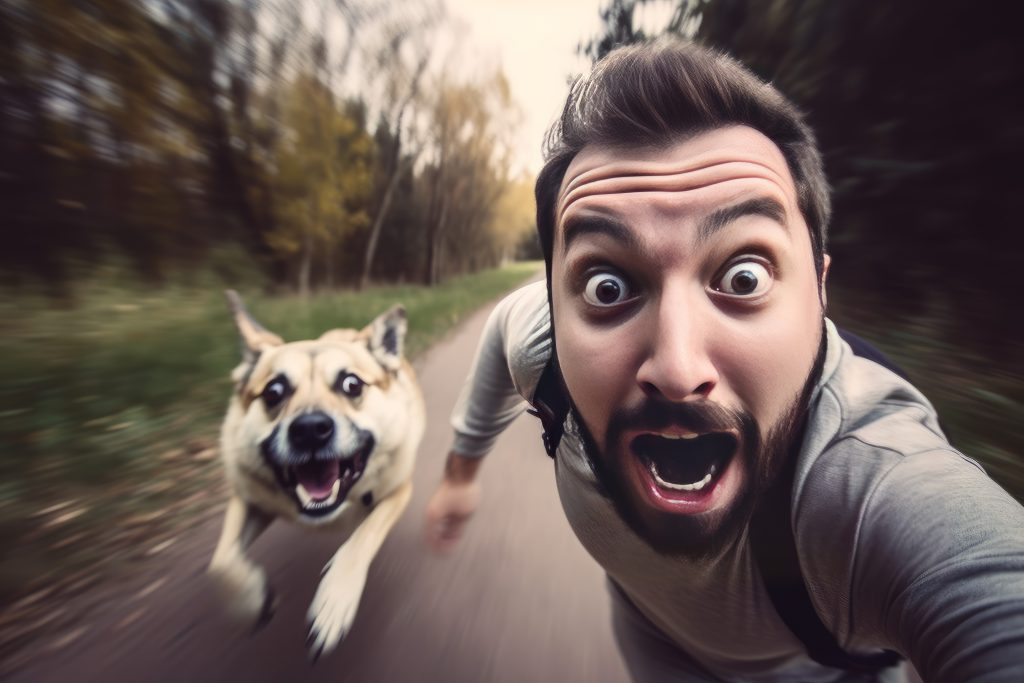When a furry companion triggers a primal fear within you, it might be more than just a passing discomfort. The fear of dogs, termed cynophobia, can cast a shadow over your daily life and interactions. But what lies beneath this fear, and how can you navigate through it to reclaim your sense of peace and security? Understanding the intricacies of cynophobia could be the key to unlocking a path towards overcoming it. Curious to explore the depths of this fear and discover effective ways to address it? Stay tuned to uncover the answers.
Definition of Cynophobia
If you find yourself experiencing an inexplicable and intense fear of dogs, you may be grappling with cynophobia, an anxiety disorder characterized by an extreme aversion to canines. The origins of this canine phobia can be diverse, ranging from traumatic experiences with dogs to genetic predispositions or learned behaviors. Managing dog anxiety involves various fear therapy techniques, such as exposure therapy to gradually confront the fear of dogs in a controlled setting. Understanding the prevalence of pet fears like cynophobia is essential, as it affects individuals differently and can lead to severe avoidance behaviors.
Interventions for animal dread, particularly cynophobia, often involve cognitive-behavioral therapy (CBT) to help reframe negative thought patterns surrounding dogs. Additionally, relaxation techniques like mindfulness exercises and yoga can aid in managing anxiety related to cynophobia. Seeking professional help to address cynophobia is crucial, as untreated phobias can impact mental well-being significantly. By utilizing effective therapy methods and tailored interventions, individuals can work towards overcoming their fear of dogs and improving their quality of life.
Prevalence and Risk Factors
Prevalence of cynophobia, the extreme fear of dogs, varies among individuals and can be influenced by a combination of genetic predispositions, learned behaviors, and traumatic experiences. Fear triggers for cynophobia can stem from various sources, such as specific encounters with aggressive dogs or witnessing dog-related accidents. Genetic influences play a role in predisposing individuals to developing cynophobia, especially if there is a family history of anxiety disorders or phobias. Childhood experiences, like being chased or bitten by a dog during formative years, can also significantly contribute to the development of this fear.
| Fear Triggers | Genetic Influences | Childhood Experiences |
|---|---|---|
| Aggressive encounters | Family history of anxiety disorders | Traumatic events involving dogs |
| Witnessing dog-related accidents | Genetic predispositions to phobias | Early negative interactions with dogs |
Cognitive therapy, particularly cognitive-behavioral therapy (CBT), is an effective treatment option for cynophobia, helping individuals reframe their thoughts and responses to fear. Support networks, including friends, family, and support groups, can provide emotional support and understanding throughout the treatment process.
Symptoms and Manifestations
Experiencing symptoms of cynophobia, you may exhibit physical reactions like sweating, trembling, and a rapid heartbeat when encountering dogs. These manifestations can be distressing and overwhelming, impacting your daily life significantly. Here is a breakdown to help you understand the symptoms and manifestations better:
- Physical Manifestations
- Sweating
- Trembling
- Rapid heartbeat
- Nausea
- Emotional Triggers
- Intense fear and anxiety
- Feeling of impending danger
- Overwhelming panic
- Behavioral Responses
- Avoidance of situations where dogs may be present
- Difficulty concentrating due to fear
- Seeking reassurance from others
- Agitation or restlessness
- Cognitive Distortions
- Exaggerated thoughts about the danger posed by dogs
- Catastrophic thinking about potential outcomes
- Inability to rationalize the fear
- Difficulty differentiating between real and perceived threats
To cope with these symptoms, seeking support from mental health professionals, practicing relaxation techniques, and gradually exposing yourself to dogs in a controlled setting can be beneficial. Remember, you are not alone in this, and help is available to guide you through managing your fear.
Diagnosis and Evaluation
When diagnosing Cynophobia, healthcare providers assess symptoms, personal and family history, and past traumatic experiences to provide an accurate evaluation. Fear assessment plays a crucial role in identifying the intense and irrational fear of dogs. Behavioral evaluation helps in understanding how the fear manifests in specific situations, while anxiety diagnosis is essential to differentiate cynophobia from general fears. Phobia identification involves recognizing the excessive and persistent fear that goes beyond a normal response. Emotional responses to dogs, such as panic attacks or extreme anxiety, are also considered during the evaluation process.
Treatment Approaches for Cynophobia
To address cynophobia effectively, exploring various treatment approaches tailored to individual needs is essential. Here are some key strategies to help manage and overcome the fear of dogs:
- Exposure Therapy Benefits: Gradual exposure to dogs in a controlled environment can help desensitize individuals to their fear and reduce anxiety over time.
- Medication Effectiveness: In severe cases, medications like benzodiazepines or SSRIs can be prescribed to help manage the symptoms of cynophobia alongside therapy.
- Cognitive Behavioral Techniques: Cognitive-behavioral therapy (CBT) can assist in identifying and changing negative thought patterns and behaviors associated with the fear of dogs.
- Relaxation Strategies: Incorporating relaxation techniques such as deep breathing exercises, mindfulness meditation, and progressive muscle relaxation can help individuals manage anxiety when faced with their fear.
- Support Group Benefits: Joining a support group for individuals with cynophobia can provide a safe space to share experiences, gain insights, and learn coping strategies from others facing similar challenges.
Impact of Untreated Cynophobia
Untreated cynophobia can significantly impact a person’s mental and emotional well-being, leading to various complications if left unaddressed. The fear of dogs, if not properly managed, can have severe consequences on one’s overall quality of life. Here is a breakdown of the potential impacts of untreated cynophobia:
| Social Consequences | Emotional Well-being | Mental Health Risks | Isolation Effects |
|---|---|---|---|
| Social withdrawal and avoidance of places with dogs | Increased anxiety, stress, and panic attacks | Development or exacerbation of other anxiety disorders | Feeling disconnected from social activities |
| Difficulty forming relationships with dog owners | Low self-esteem and feelings of inadequacy | Depression and mood disorders | Strained relationships due to avoidance behaviors |
| Missing out on social events or activities | Sense of constant fear and hypervigilance | Increased risk of substance abuse | Limited participation in daily life |
The psychological impact of untreated cynophobia can manifest in various ways, affecting personal relationships, mental health, and overall well-being. Seeking help and addressing these fears is crucial to prevent long-term consequences.
Coping Mechanisms and Support
Neglecting to address the impact of cynophobia can worsen its effects on your mental and emotional well-being; therefore, exploring coping mechanisms and seeking support is vital. Here are some strategies to help you manage your fear of dogs:
- Anxiety Management: Practice deep breathing exercises and mindfulness meditation to calm yourself when faced with anxiety-inducing situations involving dogs.
- Support Groups: Joining support groups for individuals with cynophobia can provide a safe and understanding environment to share experiences and learn coping strategies from others in similar situations.
- Breathing Techniques: Utilize techniques like diaphragmatic breathing to regulate your breath and reduce the physical symptoms of anxiety when encountering dogs.
- Exposure Therapy: Consider exposure therapy under the guidance of a mental health professional to gradually confront your fear of dogs in a controlled and safe manner, helping desensitize you to the source of your phobia.

